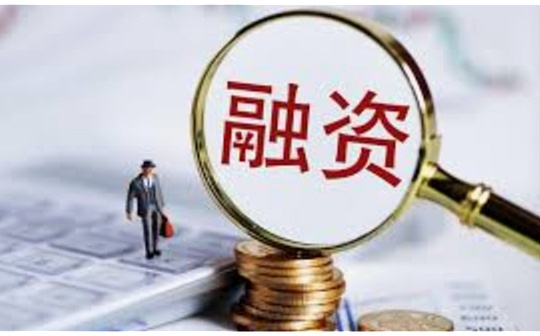Conversation with the founders of Frax Finance and Aave: Although there is competition, the game will be the largest asset class on the chain.

Reprinted from chaincatcher
06/01/2025·2DOriginal title: "How The Genius Act Could Change The Dollar Forever - Sam Kazemian & Stani Kulechov"
Original text:The Rollup
Compiled by: Yuliya, PANews

In an era of rapid development of cryptocurrency and blockchain technology, Frax Finance founder Sam Kazemian and Aave founder Stani Kulechov are undoubtedly two leaders in the stablecoin field. In their latest special conversation with The Rollup, they shared the rapid growth of the stablecoin industry, the innovation of their own projects, and their views on the upcoming regulatory changes, especially after crypto market fluctuations in 2022, how stablecoins are becoming the focus of the industry.
Today, their eyes are focused on the GENIUS Act, a landmark legislation that could boost stablecoins into legal currencies and revolutionize the global landscape of the dollar. This article will explore in-depth Sam and Stani's insights into the stablecoin market, their expectations for the bill, and the prospects for how stablecoins can shape the future financial ecosystem. PANews compiled text for this conversation.
Stablecoin boom and legislative voyage
Host: The stablecoin industry is now unstoppable. There are many versions of the legislative level that have been promoted in the House and the Senate. Although the market share is currently only 1.1% of the US dollar M1 supply, it seems that the entire industry believes that "this is just the beginning." As core players in the industry, how do you view this time point?
Sam Kazemian:
Frankly speaking, it's hard for me to suppress my excitement. I read investment reports and ETF briefings every day, and without exception, I list "AI" and "stablecoin" as the two hottest areas in the world today, and no other industry can match it. As the founder of a stablecoin protocol, it feels great to see that this industry is finally understood and accepted by the whole world.
We spent years researching and building Frax, which started out as an experimental "hybrid model", and now became a "legal digital dollar" route that policy makers are willing to legislate to support, and this leap is huge.
Stani Kulechov:
I fully understand how Sam feels. Stablecoins themselves are very intuitive and easy-to-understand tools, especially in regions around the world with financial turmoil and depreciation of fiat currencies - such as Argentina, African countries, and some parts of the Middle East - stablecoins provide financial stability far more attractive than their local currencies.
But even in Western countries, the value of stablecoins is not only in "stability" itself, but in its turn to the yield of DeFi into something that mainstream users can understand and use. This is the natural evolution of financial technology from "paper currency → digital currency → on-chain assets". It has truly opened up a new paradigm for cross-border value transmission.
Are stablecoins threatening the US dollar?
Host: You mentioned the value of stablecoins to markets that are difficult to obtain good currencies, such as Argentina, African countries, and some regions in the Middle East and Asia. Regarding how stablecoins affect the position of the US dollar in the global monetary system, some believe that stablecoins threaten the dominance of the US dollar, while another view is that stablecoins actually expand the global influence of the US dollar. How do you view this issue?
Sam Kazemian:
I think this completely misunderstands the role of stablecoins. The fact is exactly the opposite: stablecoins are the "expanding body" of the US dollar and a global extension of the US dollar's influence.
We can look at stablecoins from two stages of history:
-
The first stage is the ideal of "decentralized algorithm stablecoin" - like Terra, it relies purely on market mechanisms to maintain stability, and finally ends with a collapse;
-
The second stage is the realism stage we are entering now: if you anchor USD, then the "most perfect" stablecoin design is actually to gain recognition from the US government - let it directly admit that your token is "USD".
This is the revolutionary aspect of the GENIUS Act. It has made stablecoins "legal qualifications for the US dollar", which means that when the US Treasury Department says "this compliant token is equal to the US dollar", it can be truly accepted by all banks around the world that receive US dollars -it is no longer just a "digital asset" on the chain, but a "dollar" in the legal sense.
Stani Kulechov:
As a transaction settlement tool, the US dollar is simple and effective, and the popularity of the Internet has instead expanded global US dollar trade. Similar situations are expected to happen in stablecoins in the future, because the Internet will have a wider coverage. It takes time and widespread adoption to achieve a more decentralized system, which is a long-term process. At present, the scale of technology is reflected in expanding existing value.
In the next 2-3 years, stablecoins will become the largest asset class on the chain, and in 5-7 years, securities tokens will surpass the sum of stablecoins and crypto-native assets. Traditional asset opening brings benefits to RWA (real-world assets), mostly denominated in US dollars, which strengthens the concept of US dollar settlement transactions, but it is not necessarily the ultimate form of the future financial system. The next 10-15 years will witness the transition of trading media to new media with unique security and interoperability, which will enhance liquidity and create more ecosystem interests and build new ways of future stablecoins and trading value.
Are securities tokens the ultimate form of on-chain assets?
Host: Stani, you just mentioned that in the long run, stablecoins are just transitions, and securities tokens will become the largest asset class on the chain, even surpassing stablecoins and native crypto assets. What assets do you mean specifically? What is the logic behind this judgment?
Stani Kulechov:
This is a broad concept. The RWA we often talk about actually covers securities tokens. The scope can range from listed company stocks, private equity, debt instruments (such as treasury bonds, corporate bonds) to possible structured financial products in the future.
At present, many stablecoin reserves are supported by short-term U.S. bonds, and this kind of asset has played a role in the chain. But as the on-chain interest rate tools mature, we will see traditional assets at higher returns and more complex risk levels also being brought to the chain - and this is the backbone of the financial system.
In the past, many high-quality assets had poor liquidity not because they were not attractive, but because they had high entry barriers and limited distribution channels. DeFi provides a globally accessible liquidity network that can free these assets from the "closed" financial structure and be priced and traded directly on the chain. This will reshape the entire capital market structure.
The core impact of the GENIUS bill: Who can "print the dollar"?
Host: Sam, you talked about conversations with Senator Hagerty and other legislators. Can you talk about what new opportunities will be opened once the GENIUS bill takes effect?
Sam Kazemian:
The US dollar has many definitions in the financial system. The Federal Reserve distinguishes different types of US dollar assets through categories such as M1, M2, and M3. Among them, M1 currency refers to the currency that can be used immediately in the economy, including bank deposits, on-demand deposits and money market funds that can be quickly converted into cash. The M2 currency form is more risky, such as bank debts denominated in US dollars but not insured by FDIC (Federal Deposit Insurance Company), which are more like investments denominated in US dollars than currency in the traditional sense.
Since the 19th century, the issuance rights of M1 currencies have been an exclusive privilege of chartered banks in the United States. They can create "ready-to-use" currencies, such as demand deposits, money market funds, etc. And now, the GENIUS Act gives this capability to stablecoin issuers, and some entities that are not franchised banks can issue M1 currencies flexibly and innovatively. That's why some banks have been very opposed to the bill until now, as they prefer to maintain a monopoly on issuing M1 currencies.
The GENIUS Act and payment stablecoins are historic, as it allows non-franchise banks to issue M1 currency for the first time through strict regulations. These regulations require that stablecoins must be backed by highly secure assets such as money market fund securities, Treasury bills, Fed reverse repurchase, and FDIC insurance certificates. Currently, FRXUSD is working hard to become the first payment stablecoin franchise entity. The development has not yet been fully priced by the market and it may gradually be recognized in the coming months as more news about banks issuing legal stablecoins.
Stani Kulechov:
Although intuitively regulatory approvals for areas such as stablecoins may seem reasonable, the key lies in the limitations these regulations may bring, especially in terms of innovation. I also worked in financial technology before entering DeFi. At that time, the P2P lending and crowdfunding platforms were initially active, but the later regulatory framework forced many small entrepreneurial teams to withdraw because they were not able to bear the high compliance costs.
So, the key is that the GENIUS Act must set clear and clear but inclusive rules. Innovators cannot be withdrawn due to excessive prudence. Fortunately, there are now a group of very professional legislative representatives in the crypto industry working to push the process.
Many entities can issue US dollars. Will they compete with each other?
Host: Traditional banks such as JP Morgan and Citigroup all plan to issue their own stablecoins. Will there be competition among stablecoins in the future, or even "dollar inflation"?
Stani Kulechov:
In fact, we don’t think this is “competition”. In our opinion, stablecoins are more like "payment channels" or "tracks" - each user chooses the most suitable track according to the scene, such as USDC, GHO, frxUSD, etc. In the Aave ecosystem, many users' stablecoins holding periods exceed 6 months, which shows that they are not only a medium of circulation, but also a means of long-term storage of value.
In Aave V4, we also designed "GSM" (GHO stability module: an important functional module designed to ensure that Aave's native stablecoin GHO maintains 1:1 convertibility with other assets.) to accept these stablecoins as underlying collateral, such as USDC and USDT, are currently integrated. In the future, Frax can also be incorporated through governance processes to enhance the flexibility and risk resistance of the entire protocol.
Sam Kazemian:
I totally agree. The digital dollar is a positive game. The global M1 market size is US$20 trillion, while the total market value of on-chain stablecoins currently accounts for only 1%. This means that the penetration rate of the entire industry is still extremely low.
frxUSD has only been launched for three months and is currently applying for Aave ecological integration. I believe that more and more compliant stablecoins will join DeFi in the future, making the entire digital dollar system more diverse and stable. Frax's goal is to become the "basic digital dollar" in this system.
New pattern of digital dollar: Frax and Aave
Host: Sam, you recently switched Frax from L2 to L1, and even reconstructed the original governance token FXS. Is this an advance layout for "stablecoin compliance"?
Sam Kazemian:
Totally correct. Our overall architecture has transformed from an "algorithm stablecoin protocol" to a "digital dollar issuance + settlement network". The original Frax Share (FXS) was renamed Frax and became a gas and governance token; frxUSD is a brand new, legally compliant payment stablecoin.
We would like to call it the “right version of Libra Blueprint.” Libra initially tried to build a global digital currency, but failed due to political resistance. Now that the time is ripe and policy support is, we have chosen to aim to "compliant US dollars issuance" to realize stablecoin issuance, cross-chain settlement and value transfer on Fraxtal's high-performance EVM chain.
Host: Stani, Aave did not choose to issue L1 or L2, but instead built the "unified liquidity architecture" of V4. Why do you choose this path?
Stani Kulechov:
Although V4 has not been launched yet, the relevant proposal was adopted last year and development is now coming to an end. We believe that the types of assets on the chain will be extremely diverse in the future and the risk curve will be lengthened. Therefore, V4 introduced the design of "Liquidity Hubs + Spokes". Different asset classes (such as RWA, high-risk DeFi assets, etc.) can be allocated to different "branch markets", but liquidity is still managed centrally through "hubs".
In this way, the user experience is simpler, the capital utilization efficiency is higher, and system risks are effectively isolated. We have also introduced a "risk premium mechanism", where high-risk collateral will pay higher interest rates, thereby optimizing the overall borrowing cost structure.
Frax and Aave collaborate on: Let "digital dollar" directly participate
in DeFi revenue
Sam Kazemian:
Then I will "proposal" once. We plan to launch the FraxNet reward program in the Frax FinTech App. Users holding frxUSD can obtain risk-free returns at the US Treasury level in unmanaged wallets.
But I want to go further - let frxUSD holders deposit their assets directly into Aave to get profits through the real lending market. This will turn the combination of "digital dollar + on-chain income" into reality, and will also make Aave the first DeFi income platform to connect to legal dollar.
Stani Kulechov:
This idea is awesome and also demonstrates the modularity and composability of the Aave V4. We are looking forward to Frax's assets joining the governance proposal process and are willing to provide relevant support to make this "on-chain dollar profit" a realistic scenario.



 jinse
jinse
